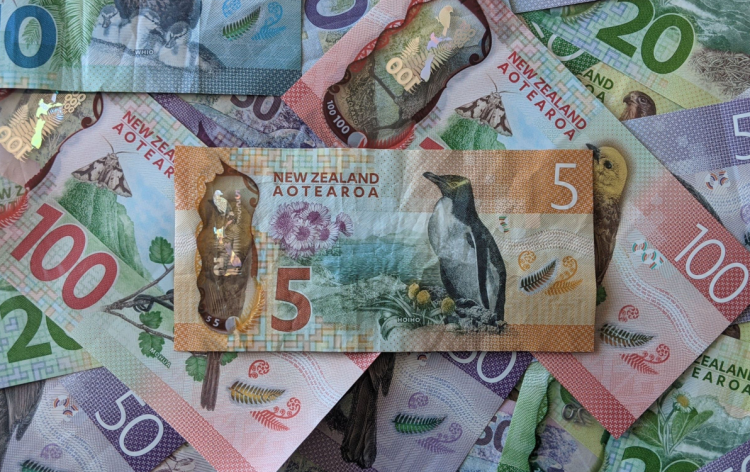NZD Trends in the Forex Market And Current Fluctuations of NZD/USD Pair

The New Zealand Dollar, commonly known as NZD, is the official currency of New Zealand and is also used in the Cook Islands, Niue, Tokelau, and the Pitcairn Islands. It is one of the top ten most traded currencies globally, and it is popular among traders due to its high liquidity and the country’s stable economy. New Zealand’s economy is heavily reliant on international trade, with strong agricultural and tourism sectors contributing significantly to the country’s GDP.
NZD is considered a commodity currency due to New Zealand’s significant export of primary products, such as dairy, meat, and wool. It has a reputation for being a high-risk currency due to its susceptibility to market fluctuations and political developments. However, it is also known for its stability and has been a popular choice for carry trades in the past.
In this article, we will take a closer look at the current trends for NZD and provide a deep view of USD/NZD currency pairs. We will analyze the factors influencing NZD’s performance and provide insights into its outlook for the future.
Everything You Should Know About NZD On Forex
The New Zealand Dollar, or NZD, is a popular currency in the forex market, with high liquidity and stability making it a choice for many traders. NZD is known as a commodity currency due to New Zealand’s significant export of primary products, such as dairy, meat, and wool. The country’s economy is heavily reliant on international trade, with strong agricultural and tourism sectors contributing significantly to the country’s GDP.
NZD is often used in pairs with other major currencies such as the US dollar (USD), Euro (EUR), and Japanese Yen (JPY). The most popular currency pair with NZD is NZD/USD, which represents the value of the New Zealand dollar relative to the US dollar. This pair is also known as the “Kiwi” due to the bird appearing on the one-dollar coin of New Zealand.
In terms of main trends and fluctuations, NZD is known for being volatile, with significant price swings often occurring due to political developments, economic data releases, and other external factors. For example, the NZD/USD pair experienced a sharp decline in early 2020 as a result of the COVID-19 pandemic and its impact on the global economy. However, in recent years, the NZD has generally shown strength against other currencies, reflecting New Zealand’s strong economic performance.
One of the main risks associated with trading NZD is the currency’s sensitivity to global market conditions. As a small, open economy heavily reliant on international trade, New Zealand is vulnerable to external shocks, such as shifts in global commodity prices, changes in monetary policy by major central banks, and geopolitical developments. Additionally, traders must also keep an eye on the Reserve Bank of New Zealand’s monetary policy decisions, which can impact the value of the currency.
Despite these risks, NZD is often favoured by traders due to its high liquidity and the country’s stable economic and political environment. Its status as a commodity currency also makes it an attractive choice for carry trades, where traders borrow in a currency with low-interest rates to invest in higher-yielding assets denominated in another currency.
In conclusion, NZD is a popular currency in the forex market due to its high liquidity, stability, and status as a commodity currency. While it is known for being volatile and susceptible to external shocks, it remains a popular choice for traders seeking diversification and opportunities for profit. The NZD/USD currency pair, in particular, is a popular choice for traders seeking exposure to both the New Zealand and US economies.
Current Trend for NZD/USD Currency Pair
Recently, the NZD/USD pair rallied near the 0.6200 level, rising over 0.25% for the day. This followed an earlier rejection slide from a 50-day Simple Moving Average. Despite softer data from New Zealand, the Kiwi’s risk-sensitive nature benefited from a generally positive tone in the equity markets, causing a decline in the safe-haven US Dollar (USD). Confidence in the market was boosted by hopes of a strong economic recovery in China, as investors look beyond recent banking crises.
Premier Li Qiang’s promises of economic stimulus and growth also contributed to this optimism. However, the NZD/USD pair’s upside potential appears limited, given the possibility of further tightening by the Federal Reserve (Fed). The technical picture shows the pair precariously situated at the lower boundary of a rising wedge pattern, indicating the pair’s medium-term downtrend.
The pair’s previous attempts to breakout have failed and a confirmation of a breakdown would require pushing below the March 27 lows at 0.6180. A successful breakdown would likely lead to a decline to 0.6160 and the 200-DMA, followed by 0.6120 and, in a bearish scenario, to 0.6060.


























Comments (0 comment(s))